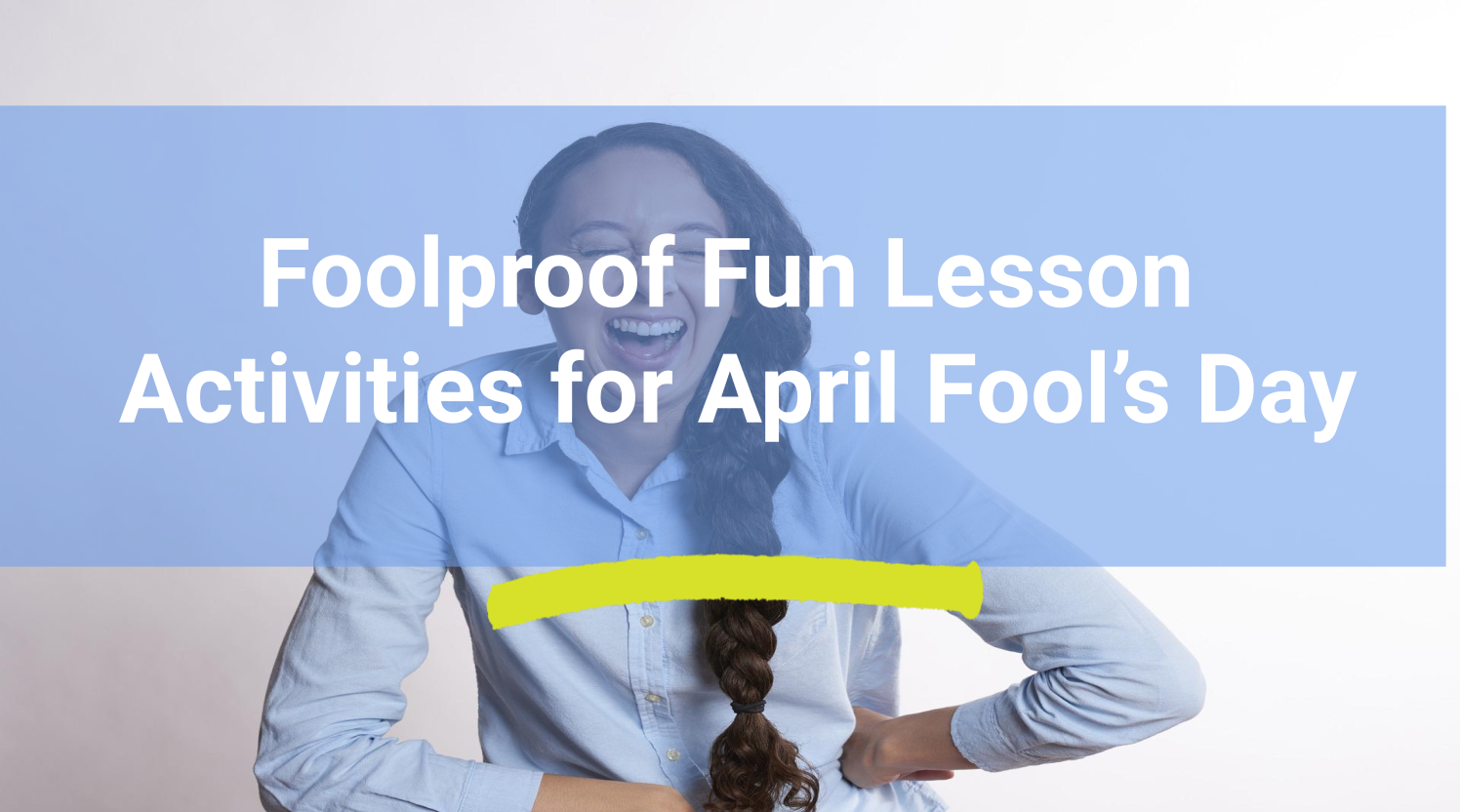Foolproof Fun Lesson Activities for April Fool's Day


The degree of tomfoolery varies from one country to another as well as from one individual to another, but for the most part the pranks are harmless and intended to be funny. Still, not all of your students will have the same appreciation for these pranks, even if they come from the same home culture. Since controversy provides the perfect excuse for classroom conversation, give your students a forum to discuss what is right and what is wrong about the lighthearted holiday with these April first activities.
A common practice among many April Fool’s Day celebrants is the practice of playing practical jokes on friends and family. These (somewhat) innocent pranks are intended to be funny, and often are, but sometimes they can go too far. Put your students into discussion groups, preferably groups that represent different nations, to discuss their opinions on practical jokes.
Have each group decide on a list of five pranks they think are appropriate and five they think are inappropriate and give reasons for those they say are inappropriate. If possible, ask your students to come up with a short list of rules that should be followed when planning and carrying out an April first prank. Be careful, though. Talking about practical jokes may inspire your students to play a few of their own, so be on guard!
After a discussion on what makes an appropriate practical joke, spend some time as a class brainstorming all the words you can think of that English speakers associate with April Fool’s Day. Be sure to include as many synonyms for prank as you can, and you may want to have your students use a thesaurus and dictionary to help expand the list. Review unfamiliar vocabulary with your class, and then challenge groups to make a word game for their classmates using some or all of the words the class brainstormed. Groups may want to make their own word search puzzles or crossword puzzles. They can also make cryptograms or other word puzzles with the brainstormed vocabulary list. You may want to have a few copies of popular puzzle magazines available in your classroom so your students can gain inspiration for their original word games. If word puzzles are inappropriate for your students, either because of their difficulty level or the context in which you teach, you can use the lists that they brainstormed for a game of charades or Pictionary, which will keep the energy in the classroom high all day!
If your class is made up of students of several nationalities, they might benefit from a time of sharing on how April Fool’s Day is celebrated in different cultures around the world. Culture is an ever-present topic in a multinational ESL classroom, so asking students to share with the class what they typically experience on April first can help your students understand each other and their cultures. As your students share, you may hear of the “April fish” tradition celebrated in French speaking Canada, France and Italy. Your students may also say that pranks played after noon attest that the prankster is a fool rather than his victim. To explore this activity further, pair students with someone from a different home country and have the two compare and contrast the celebrations in each nation. You can have them use a Venn diagram or make lists of similarities and differences. You may also want your students to research what types of traditions different nations have for April Fool’s Day. You can find this information online or in your library.
Perhaps one of the longest traditions of trickery is the artistic rendering of trompe l’oeil art. This French term which means ‘deceive the eye’ is used to describe paintings and other artistic renderings which trick the eye into believing it is seeing a three dimensional, real object rather than a two dimensional piece of art. Familiarize your students with this type of art by showing them pictures of some art of this genre (you can do an image search on trompe l’oeil to find examples), then share with them this CBS News video about Julian Beever, one of the most renowned trompe l’oeil artists of our time. Show the segment a first time to familiarize your students with Beever’s art, and then play the clip again. Challenge your students to take notes during the second viewing, noting what makes Beever’s art different from traditional art and what methods he uses to share his art with the general population. For the truly adventurous, you can challenge your students to come up with their own trompe l’oeil pieces of art!
Having your students share their own personal experiences and opinions on April Fool’s Day opens the channels for communication and gives them a chance to practice their English skills while still bringing fun into the classroom.
Do you have any unique ideas for celebrating April Fool’s Day? Share them below.